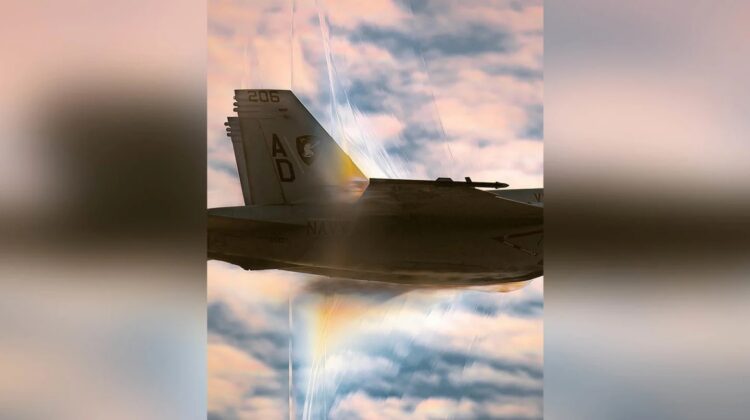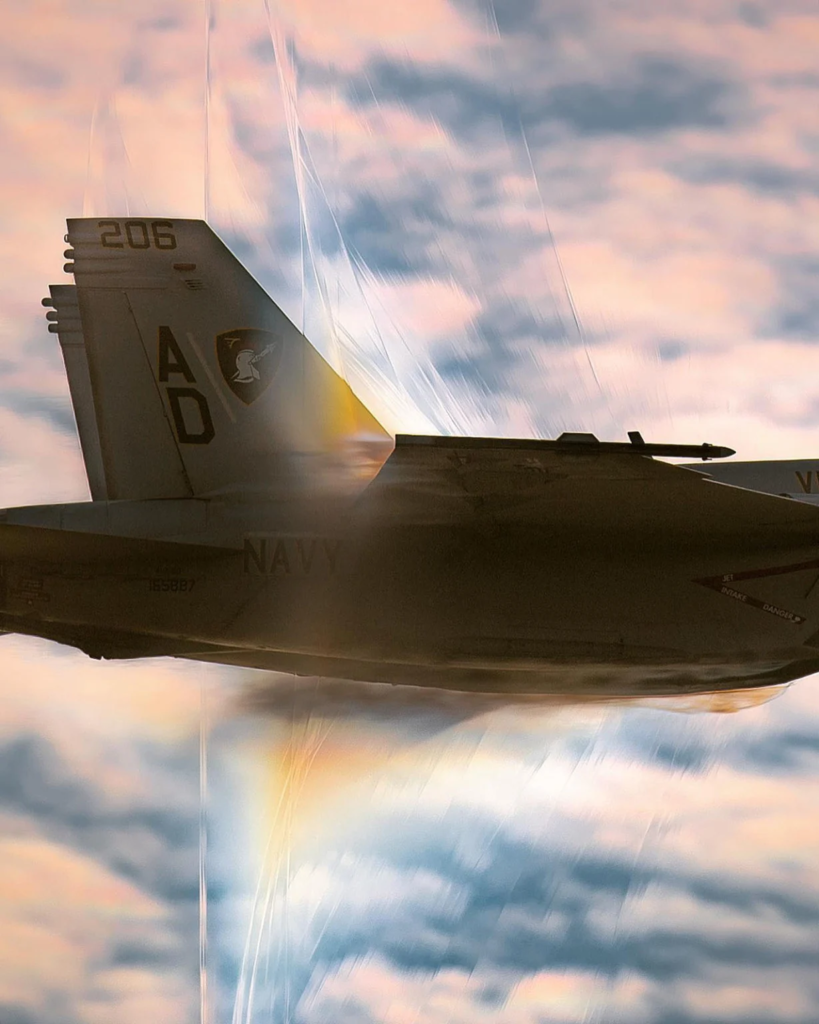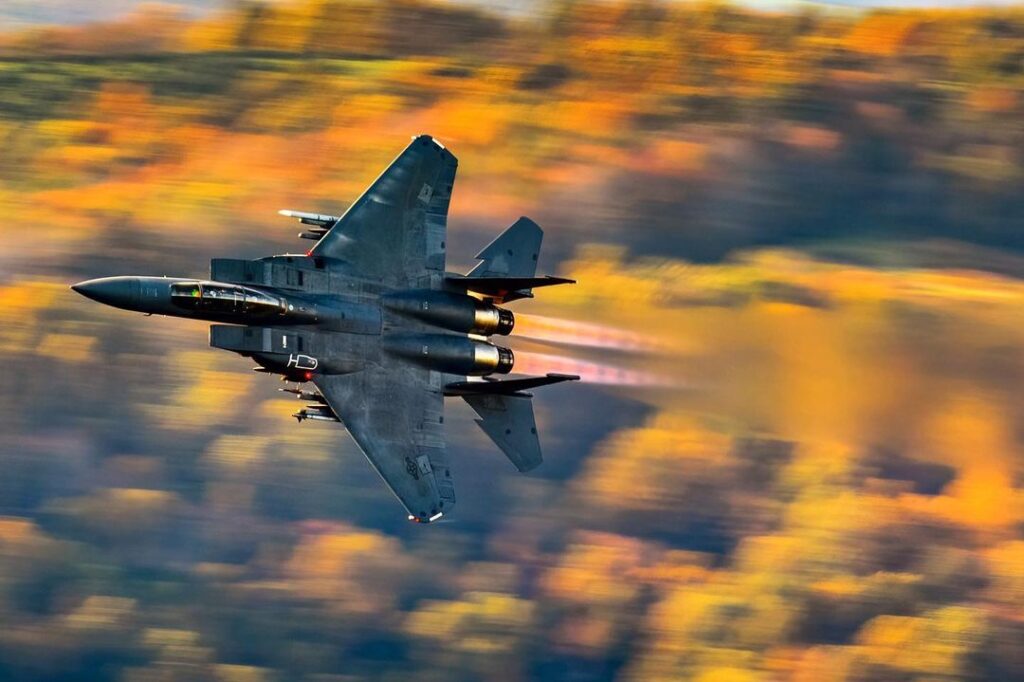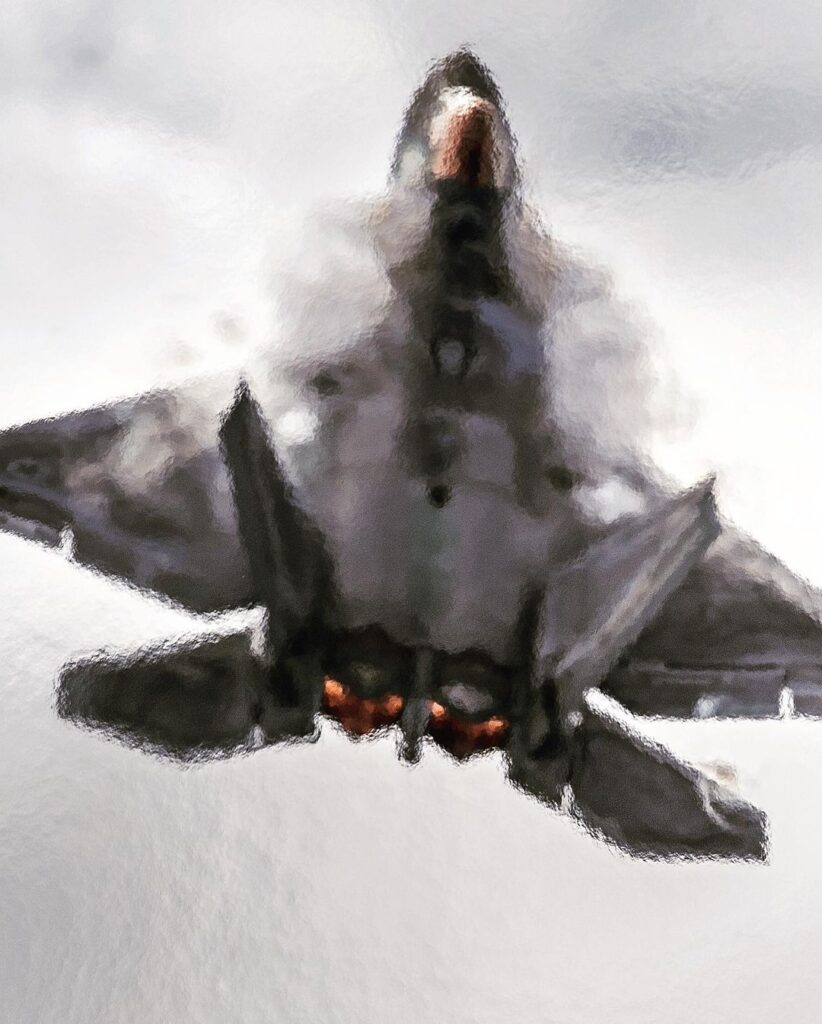
A remarkable close-up photograph of a plane producing “shockwave lines” as it approached the speed of sound was taken by photographer Camden Thrasher while he was documenting a display of US Navy fighter jets.
The photo of a McDonnell Douglas F/A-18 Hornet, the supersonic multirole combat jet first introduced in the US Navy in 1984, was taken by the motorsport and aviation photographer in late 2021 while he was at the EAA Airventure airshow featuring the VFA-106 Gladiators (officially Strike Fighter Squadron 106) in attendance.
Thrasher is quick to point out that the plane was not traveling at speeds greater than the speed of sound, despite the fact that his picture has gone viral online as an example of a jet breaking the sound barrier.
The annual airshow is held at Wittman Regional Airport in Oshkosh, Wisconsin, a city with a population of just under 70,000 people who would probably not enjoy hearing sonic booms every summer.
The photographer informs us that supersonic flight is subject to a number of regulations, most of which forbid it in densely populated areas or at low altitudes. Contrary to popular belief, the image does not depict a jet breaking the sound barrier.
At air shows, pilots frequently perform high-speed passes at speeds close to the speed of sound (for example Mach 0.97 instead of 1.00 or above). Although not exceeding the speed of sound (or the laws), it is still impressive to witness at around 700 mph.
Warped Air and Bent Light
What is actually seen in the photo is how the air around a supersonic jet is warped as it nears Mach 1 (the speed of sound in a medium, or around 761 mph at sea level on a standard day).

“Those lines can start to form as a jet approaches the speed of sound,” Thrasher says. “I’m not an aerodynamicist, but I’ll try my best to explain.
“The airplane is going slightly less than the speed of sound but as the air passes over various parts of the wings and fuselage, the airflow itself can actually briefly be going supersonic in certain areas. As this happens, the air will be compressed or expanded and those changes in pressure will change how light is refracted or bent as it passes through.
“The visible effect is those ‘shockwave’ lines, or sometimes a cone-shaped cloud that envelops part of the aircraft if the air is humid enough.”
The viral photo was captured with a Nikon D5 DSLR at 500mm, f/5, 1/2500, and ISO 50.
Motorsport Photography with a Side of Aviation
Thrasher’s Instagram features a mix of impressive motorsport and aviation photography.
“I started photographing motorsports in high school as a hobby,” Thrasher says. “I went to college for vehicle engineering but decided to pursue photography full time afterward and I’ve been doing that for about 10 years now.
“I’ve always been interested in aviation but only fairly recently started photographing more of it in my free time. I use it as a break from the motorsports world but also to keep my brain active and thinking about new ways to photograph things.”





Awesome!!!!! Who’da thunk it